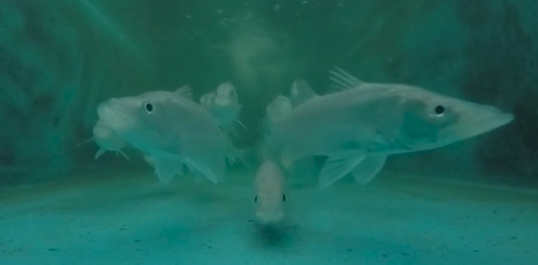
The Common Snook (Centropomus undecimalis):
The common snook is an estuarine and freshwater-dependent fish species. Within estuaries, juvenile common snook are most often found in coastal wetland ponds, island networks, and creeks. Despite being a euryhaline species of fish, the common snook prefers lower-salinity conditions in the early stages of its life. Common snook, like many species of fish, are very in tune with their environments; even a slight change in their surroundings can have a significant impact on their behavior. The common snook is widespread throughout the tropical waters of the western Atlantic Ocean from the coast of the North Carolina to Brazil including the Gulf of Mexico and the Caribbean Sea. Snook likely originated in Central America, and changes in the earth’s climate brought the snook to Florida. During a great warming trend after the Ice Age, snook moved northward along the Mexico shoreline. They followed the perimeter of the Gulf of Mexico, along the west and east coasts of Florida. All snook are “catch-and-release only” in the Gulf of Mexico until August 31, 2013. At that time, the FWC can choose to open or close snook harvest for another season. The commercial harvest or sale of snook is prohibited by the same regulations.